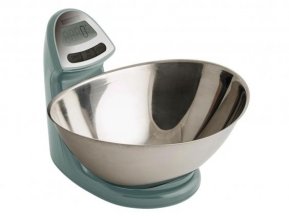Best kitchen scales

A digital scale is a game changer in the kitchen. A scale is critical for baking recipes, where measuring dry ingredients by weight is the only way to guarantee accuracy. We’ve proven this in tests where we’ve repeatedly measured a cup of flour by volume, using a “dip and sweep” method, and found that there can be up to a 20 percent difference in the weight—a variance that can mean the difference between a cake that’s squat and dense and one that’s fluffy and tender.
Scales have many applications in cooking, too. Using one to portion burgers, for example, means no more guessing if the patties are the same size and will thus cook at the same rate. They can even make cooking and cleanup more efficient, thanks to the help of the “tare” function; with the push of this button, you can reset the displayed weight on the scale to zero, allowing you to skip the fussy “dip and sweep” method.
For years, we’ve relied on the OXO Good Grips 11 lb Food Scale with Pull Out Display ($49.95), but many new (and some cheaper) models have since hit the market, so we decided to take another look. We bought 10 scales, priced from $11.79 to $67.27, with maximum capacities between 9 and 15 pounds. We tested them for accuracy and also assessed their design, countertop stability, and how easy they were to clean and store.
Measuring Pros and Cons
The good news: All of the scales were acceptably accurate. When we weighed calibrated lab weights on multiple copies of each model, most gave the exact same reading every time. Only two of them consistently displayed fluctuating readings, and even those were just a few grams off the mark. (Note that we tested only consumer-grade scales, which are not certified by the National Conference on Weights and Measures, as more-expensive commercial-grade scales are too pricey for the home cook.)
Related posts:

 One of the more cost-effective measurements in a paper mill is that which monitors the flow of pulp stock into the head box of the paper machine. The stock level…
One of the more cost-effective measurements in a paper mill is that which monitors the flow of pulp stock into the head box of the paper machine. The stock level… Why is taking all the tricks called a boston in pinochle what are kegel exercises How to change administrator on windows 10? In what order should you learn tricks…
Why is taking all the tricks called a boston in pinochle what are kegel exercises How to change administrator on windows 10? In what order should you learn tricks… Overview Marel Marine Scales are specifically designed for use on board fishing vessels and factory trawlers. This cost-effective series of scales ranges from the…
Overview Marel Marine Scales are specifically designed for use on board fishing vessels and factory trawlers. This cost-effective series of scales ranges from the… How long to air fry french fries what does fafsa stand for What does it mean when ypu use alocohol and the tips of your fingers turn white Who raps bitches aint…
How long to air fry french fries what does fafsa stand for What does it mean when ypu use alocohol and the tips of your fingers turn white Who raps bitches aint… Globe s portion control scales can be used in a wide spectrum of applications from delis and pizza parlors, to bakeries and restaurants, or any establishment where…
Globe s portion control scales can be used in a wide spectrum of applications from delis and pizza parlors, to bakeries and restaurants, or any establishment where…